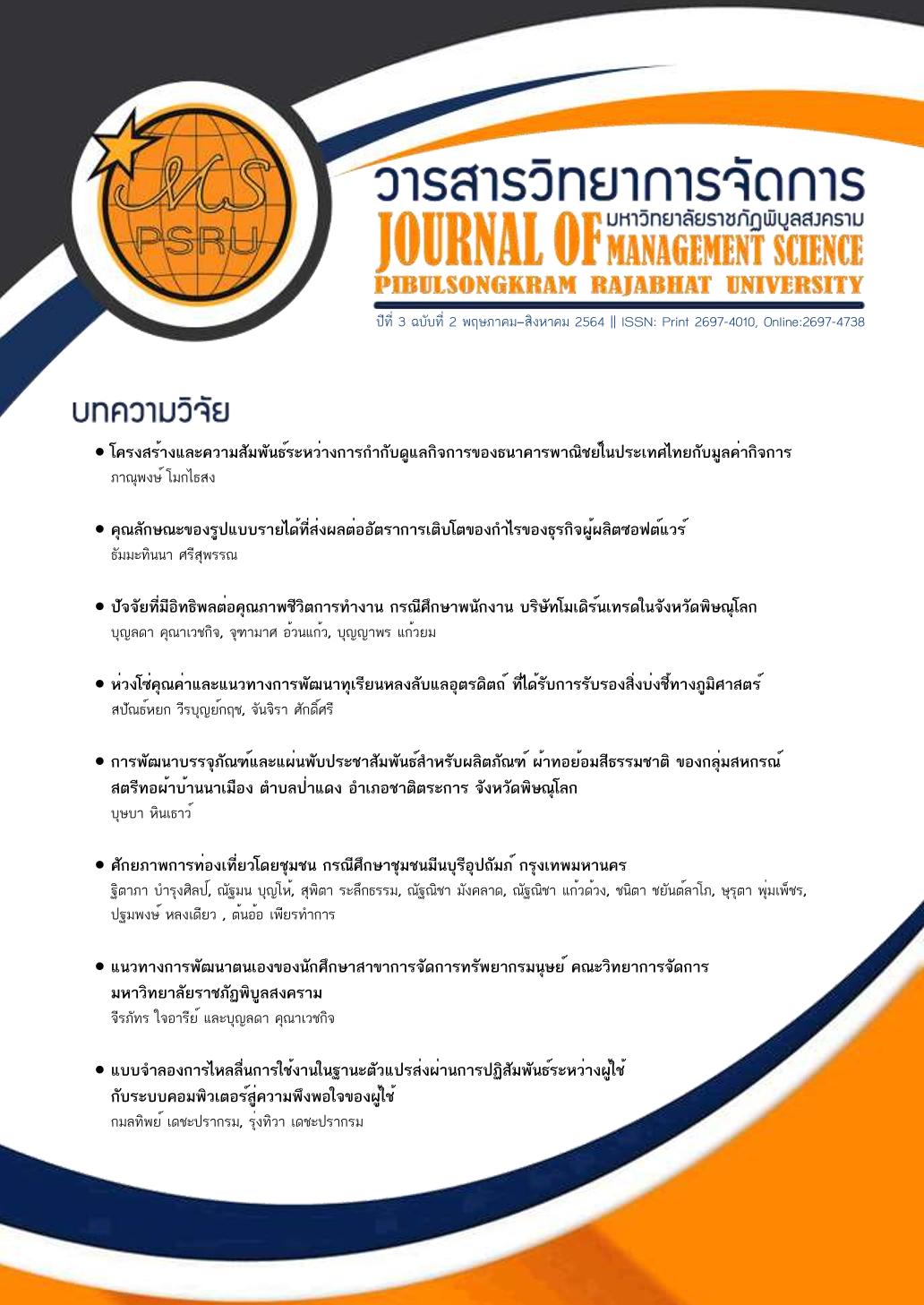Value Chain and Development Guidelines for Uttaradit Long Lab-Lae Durian Certified Geographical Indication
Keywords:
Long lab-lae Durian, Geographic Indications, Value ChainAbstract
The objective to study the value chain and cost as well as development approaches of Long lab-lae Durian certified for geographic indications. Collected data from interviews with including farmers, entrepreneurs and related agencies at the local level. With value chain analysis tools, SWOT analysis and TOWS Matrix. The results of the study showed that value chain of Durian (GI), It starts with farmers Act as a producer by selecting pure breeds provide suitable inputs Let's produce the GI durians by producing that must be linked to a geographic production site that is registered with the geographical indication. There is a production process that has been trained to GI product standards. Farmers collect their produce by selecting the mature fruit and not curing with durian curing liquid. The price is agreed before selling, sell to operators which is the main distribution channel followed by selling products to consumers through online sales. Entrepreneurship value chain when buying produce from farmers and selling products to consumers through two channels: selling through the store and through online sales. The strategy to develop a value chain to enhance the product of Long lab-lae Durian. The guidelines are as follows: 1) Ways to increase competitiveness to increase market opportunities. 2) Infrastructure development with innovation and value of agricultural products identity. 3) Support effective marketing organizations. 4) Enhancing standards and guidelines for improving the quality of GI products under a changing climate.
References
กรมทรัพย์สินทางปัญญา กระทรวงพาณิชย์. (2561). สิ่งบ่งชี้ทางภูมิศาสตร์ (GI). สืบค้น 16 ธันวาคม 2562, จาก http://www.ipthailand.go.th/th/gi-001.html
พันธกานต์ ชูจันทร. (2558). ปัญหาความสอดคล้องกับมาตรฐานสากลของพระราชบัญญัติคุ้มครองสิ่งบ่งชี้ทางภูมิศาสตร์ พ.ศ. 2546. สืบค้น 16 ธันวาคม 2562, จาก http://dspace.bu.ac.th/bitstream/123456789/2140/1/phunthakan_choo.pdf
ศิริวัฒน์ ทรงธนศักดิ์. (2562). คู่มือการจัดทำและวิเคราะห์ประมาณการข้อมูลต้นทุนการผลิตพืช. ศูนย์สารสนเทศการเกษตร. พิษณุโลก: สำนักงานเศรษฐกิจการเกษตร.
สำนักงานเศรษฐกิจการเกษตร. (2558). แนวคิดระบบโซ่อุปทานสินค้าเกษตรตามยุทธศาสตร์การพัฒนาโลจิสติกส์และโซ่อุปทานภาคเกษตร: ยุทธศาสตร์การพัฒนาโลจิสติกส์และโซ่อุปทานภาคเกษตร พ.ศ. 2556-2559. กรุงเทพฯ: กระทรวงเกษตรและสหกรณ์.
เอกชัย อภิศักดิ์กุล และทรรศนะ บุญขวัญ. (2553). คู่มือวิเคราะห์ SWOT อย่างมืออาชีพ. กรุงเทพฯ: ปัญญาชน.
Neuman, W. L., (1991). Social research methods: qualitative and quantitative approaches. Boston: Allyn and Bacon.
Porter, M.E. (1985). Competitive Advantage. Creating and Sustaining Superior Performance. Retrieved December 16, 2019, from http://people.tamu.edu/~v-uenger/446/Value_Chain.pdf
Tiger. (2021). เครื่องมือวิเคราะห์ปัจจัยภายนอก PESTEL Analysis. สืบค้น 10 มีนาคม 2563, จาก https://thaiwinner.com/pestel มกราคม 18, 2021/Management/By Tiger.
Downloads
Published
How to Cite
Issue
Section
License
Copyright (c) 2021 Pibulsongkram Rajabhat University

This work is licensed under a Creative Commons Attribution-NonCommercial-NoDerivatives 4.0 International License.
บทความที่ได้รับการตีพิมพ์ในวารสารวิทยาการจัดการมหาวิทยาลัยราชภัฏพิบูลสงคราม เป็นลิขสิทธิ์ของมหาวิทยาลัยราชภัฎพิบูลสงคราม
บทความที่ลงพิมพ์ใน วารสารวิทยาการจัดการมหาวิทยาลัยราชภัฎพิบูลสงคราม ถือว่าเป็นความเห็นส่วนตัวของผู้เขียนคณะบรรณาธิการไม่จำเป็นต้องเห็นด้วย ผู้เขียนต้องรับผิดชอบต่อบทความของตนเอง


